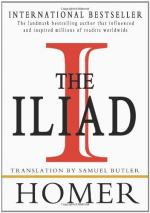|
This section contains 8,981 words (approx. 30 pages at 300 words per page) |

|
SOURCE: Clarke, Michael. “Between Lions and Men: Images of the Hero in the Iliad,” Greek, Roman, and Byzantine Studies 36, no. 2 (summer 1995): 137-59.
In the following essay, Clarke follows the implications of Homer's beast similes in the Iliad, highlighting their contribution to the poem's theme of extreme heroism that culminates in self-destruction.
If the beast-similes of the Iliad appear easy to understand, this is because they correspond formally to one of the simplest types of comparison found in poetry of the modern European tradition. As a rule our own culture encourages us only to contrast the human world with that of animals, so that an image drawing them together seems trivial: we know we are dealing in tropes when Shakespeare calls the Black Prince a “lion's whelp” or when Byron says that “the Assyrian came down like the wolf on the fold.”1 As such things are not taken as...
|
This section contains 8,981 words (approx. 30 pages at 300 words per page) |

|


